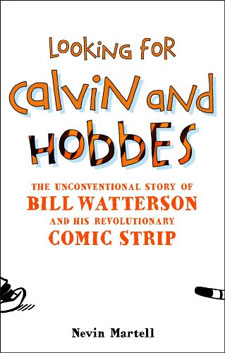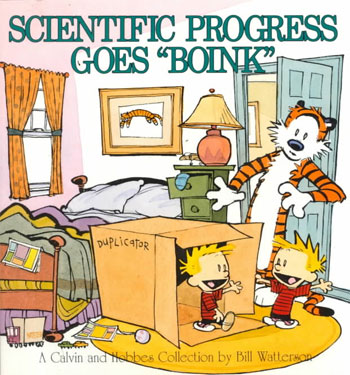 While I wasn’t a big comic book reader growing up (GI Joe, Archie, etc), I did discover and enjoy my share of newspaper comics. My grandfather was a retired newspaper editor, and when I would visit my grandparents in Abilene, TX, part of our morning ritual was reading the paper together. He had strict but simple rules – I had to return the paper in its original condition – all sections in order, after I was finished reading it. In exchange for following the rules, I had access to the world and entertainment news that I craved, and more importantly, access to the comics page!
While I wasn’t a big comic book reader growing up (GI Joe, Archie, etc), I did discover and enjoy my share of newspaper comics. My grandfather was a retired newspaper editor, and when I would visit my grandparents in Abilene, TX, part of our morning ritual was reading the paper together. He had strict but simple rules – I had to return the paper in its original condition – all sections in order, after I was finished reading it. In exchange for following the rules, I had access to the world and entertainment news that I craved, and more importantly, access to the comics page!
I started out reading the standard comics that most were reading in the ’80s – Peanuts, of course, Garfield, and also The Wizard of Id and HÁ¤gar the Horrible. I had started reading at a very early age, so as I advanced further, my interests deepened into the more reality-based waters of Doonesbury and Bloom County. Check that – I LOVED Doonesbury and Bloom County. Add in The Far Side to that list, and you had the big three list of comics that I was reading in the ’80s.
And then Calvin and Hobbes came along in 1985. As far as I was concerned, comics were going to end for me whenever Berke Breathed decided to end Bloom County (I just had no idea that he would do it so soon, dammit!), and I had very little use for the new school of comics. But Bill Watterson’s Calvin and Hobbes was an unavoidable tractor beam for a young kid like me – a strip that spoke about and illustrated all of the things that I enjoyed about being a kid, along with the not-so-enjoyable parts. For me, there had never been a strip that captured so perfectly the life of a kid – friends, parents, being left at home with the torturous babysitter, annoyingly icky girls, and that damn bully at school.
It wasn’t until I was older that I got a real appreciation for how visually ahead of its time Calvin and Hobbes was – the elaborate full-panel dinosaur illustrations, the space scenes, etc. that took the limitations of the already shrinking comics page as far as it could go, using at times every available color that could possibly be used in newsprint. Calvin and Hobbes was genius. And in 1995, Watterson pulled the plug for the last time, a short time after a previous hiatus for the strip. Unlike the hiatus, which certainly sucked, the strip was going away, and this time it wasn’t coming back.
Watterson lives in a suburb in my neck of the woods, within the predominately chilly confines of Cleveland, OH. In the years since the strip ended in 1995, there have been a few unsuccessful attempts to get inside the notoriously private world of Watterson. He hated the fame that came with the success of Calvin and Hobbes as much as or perhaps even more than he hated the idea of any commercial exploitation of the strip’s two principal characters. Since 1995, there have been no Calvin and Hobbes t-shirts or coffee mugs, and with the exception of a brief period of taking questions from fans to promote The Complete Calvin and Hobbes, there have been no interviews. While Watterson remains silent, there was one person that nonetheless decided to try to fill in gaps in the tale of a boy, his tiger, and the creator behind it all.
Looking for Calvin and Hobbes: The Unconventional Story of Bill Watterson and His Revolutionary Comic Strip is author Nevin Martell’s attempt to track down Watterson to hear “the rest of the story.” Martell had two plans in mind – the first plan was the easiest – Watterson agrees to the interview, and suddenly the world has a book to finally tell the story of one of the most reclusive talents to ever pick up a cartooning brush. If that didn’t play out, Plan B, termed by Martell as the “Morbidly Realistic Plan,” would be to tell the story as if Watterson was dead.
Martell walked on eggshells as he wrote the kind of letter to Watterson that you write to someone that you know already has no interest in hearing from you. With a limited amount of time to make your case, you’ve got to make your sentences quick and effective, while laying out your case for why you want to do this, and more importantly, making the case for why Watterson should talk to you. Finish the letter, tear it up, rewrite it several times, drop it in the mailbox and pray. Keep writing, and continue to interview people for the book while you wait, check.
My colleague D.X. Ferris and I had the opportunity to attend a reading/signing for the book in Watterson’s adopted hometown of Chagrin Falls, OH. I hadn’t read the book yet, but after the signing, Ferris shared that in his opinion, Looking for Calvin and Hobbes was the best example that he’d ever read of how to execute a “Plan B” after everything else goes bust. And indeed it is. Martell both explores and explains the genius of Calvin and Hobbes from a fan’s perspective while piecing together the complicated story of Watterson. Martell talks to nearly everybody but Watterson himself to accomplish this – including a wide array of Watterson’s peers (Breathed, Garfield creator Jim Davis, Fox Trot’s Bill Amend, etc.), his friends (from high school to present day), Watterson’s longtime editor Lee Salem, and even Watterson’s mother, among many others.
The narrative writing style that Martell employs in Looking for Calvin and Hobbes welcomes the reader inside what feels appropriately like Martell’s own personal journal. Stumbling upon this journal, the reader gets to join Martell on his journey to gain a better understanding of Bill Watterson as a person. Reading this book, I found myself as frustrated as Martell at times at Watterson’s inability or refusal to grasp the importance of the contributions that he has made to society and popular culture with Calvin and Hobbes. Let’s be honest – Watterson owes us nothing as fans, but it’s a real shame for him to not realize the impact and importance of Calvin and Hobbes. For now, Watterson apparently has no interest in doing that, or at least no interest in talking about it.
But we’ll always have the strips – I’ve still got that huge stack of Calvin and Hobbes books that I’ve accumulated over the years. (The Complete Calvin and Hobbes still sits waiting for purchase on my Amazon wish list.) I come across them from time to time, and I’ll grab one to read strips that are just as enjoyable to me now, as the first day that I read them. I understand now that perhaps Calvin’s parents weren’t as sadistically evil and oppressive as he made them out to be – in fact, I’ll share the occasional humorous strip with my mother. I’m not sure that Calvin would be happy to hear this – me, conversing with the enemy, what was I thinking?
I can’t give you that answer, but I will tell you this: I enjoyed the hell out of Looking for Calvin and Hobbes. After all of these years of waiting for something new, Looking for Calvin and Hobbes was a real winner, and likely the most complete picture we’ll ever have of Watterson, until the subject himself decides to talk.
In the meantime, I’ve already got Martell’s next project idea ready to go – pick up that phone again, give Berke Breathed another call, and let’s get the definitive story of Bloom County out there!





Comments